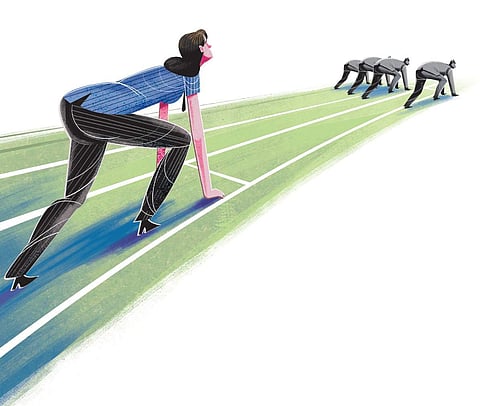

CHENNAI: Despite decades of platitudes and rhetoric on the subject of women empowerment and gender equality from successive governments at the Centre, data released by the Department of Public Enterprises (DPE) in March shows that the percentage of women employees in central public sector enterprises (CPSE) in the country stood at an abysmal 9.36 per cent in 2015-16.
According to the Public Enterprises Survey 2015-16, a DPE initiative to record CPSE performance, that number has stayed stagnant at the 9 - 10 per cent mark for the last four years.
The ratio stands in stark contrast to the national average for women’s participation in the labour force -- 28 per cent, as per the latest report from the World Economic Forum. While human resource experts point out that this might be a few percentage points lower if the unorganised sector is excluded, they say CPSE performance in this regard is still “unimpressive”.
And, PSEs are cognizant of the situation. “I acknowledge that it is below average,” admitted UD Choubey, director-general of the Standing Committee of Public Enterprises (SCOPE), the apex body representing PSEs. “But it has been improving gradually over the years and we (PSEs) are trying to do better.”
However, the percentage over the last three years has fallen, albeit marginally -- from 9.81 per cent in 2013-14 to 9.45 per cent in 2014-15 to 9.36 per cent in 2015-16. The latest numbers show that CPSEs employed only 1,15,318 women last financial year -- a fall of 12.83 per cent in three years. In contrast, total employee count fell just 8.6 per cent during the same period.
“There are many reasons for this. Many of these PSE employees were first recruited in the 70s and 80s. Women participation was generally low then. Those added later were only replacements, in naturally lower numbers” pointed out Aditya Mishra, chief executive of CIEL HR Services. “Another factor is that many CPSEs are in the technical and heavy engineering sector, where there is a heavy skew towards men.”
“But,” pointed out Rituparna Chakraborty, president of the Indian Staffing Federation, “this leads to a disturbing conclusion -- that government enterprises are still not meritocracies. If they were, there would be a better distribution of women.
When you aren’t a meritocracy, inherent biases are reflected more.” The one thing going for CPSEs is that the number of women in managerial/executive positions have gone up over the last three years, from 9.69 per cent in 2013-14 to 10.44 per cent in 2015-16.